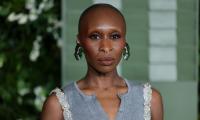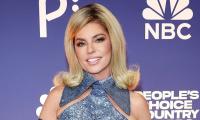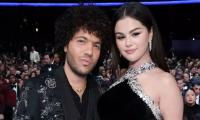This week marks the 20th death anniversary of Diana, Princess of Wales’ unfortunate end in a lonely tunnel in Paris. The moment was marked by dark irony: her final vision of the world that of paparazzi cameras flashing. Diana died as famously as she had lived; pursued and hounded to the bitter end. As her brother, the Earl of Spencer, summarised at the funeral: “A girl given the name of the ancient goddess of hunting was in the end the most hunted person of the modern age.”
Phil Hall, former editor of the News of the World, contends that at the height of her fame, a Diana story could add as many as 150,000 more in tabloid sales. Despite hating the encroachments, Diana realised that media fed the cauldrons of her popularity. She used it as and when she wanted to make a point, upstaging the staid British monarchy in a tell-all interview with the BBC’s Martin Bashir – speaking up about her bulimia, suicide attempts and of course the public admission that there were “three people in my marriage”, a thinly veiled reference to Prince Charles’ affair with Camilla Parker-Bowles. She also famously flaunted her relationship with Harrods’ heir Dodi Fayed to the paparazzi, reportedly to peeve her estranged lover, Pakistani doctor Hasnat Khan.
Diana lived before the internet age; the most photographed woman in the world probably wouldn’t have needed to register for an Instagram account but that Martin Bashir confessional, replete with short, startling revelations was like doing Twitter before Twitter. Modern-day princesses like Kim Kardashian and Katie Perry aren’t blue-blooded or camera shy but in a way they have inherited that Diana mantle. They are mass-media brands who need to market themselves incessantly to maintain vast fan followings.
What made Diana so real was that like any of us she was flawed. She was that troubled, fragile candle in the wind who managed to touch people’s hearts because she had hers broken. In more ways than one, celebrities like Taylor Swift and Deepika Padukone have occupied the public space she shaped, candidly sharing their fears as easily as their triumphs. HollywoodLife.com editor Bonnie Fuller, reveals that “Fans today don’t want mystery. They want to know it all.” The Pakistani celebrity version of this ‘all’ is what the Hocane sisters do by posting minute-by-minute selfies from anywhere and everywhere to nearly four million followers. Be it cat pictures or a designer jora-by-jora account of Urwa and Farhan Saeed’s wedding they are 24/7 lak hilna.
But celebrity status on social media also means being susceptible to backlash that can be moralistic, sexist, racist and unending. The more you tell people about your life, the greater the likelihood you will be put under a microscope and scrutinised, then lambasted. Recently two celebrities – from film and fashion – faced public vitriol on their social media accounts. Hareem Farooq, who has previously been body-shamed on social media when heavier, was trolled for posting a picture on Instagram that showed her puckering up with fellow actor Osman Khalid Butt.
The same post received almost no negative feedback when posted by Butt; when Farooq posted it she was repeatedly slut-shamed. “Why don’t you upload a naked picture of yourself so we can give you a certificate for hell?” said one commentator. “You bloody celebrities!” cursed another. The barbs did not include her male co-star. A survey by Plan International on cyber abuse suggests that not only are girls more likely to face bullying online, how they are bullied differs too. “Girls are being told what to wear, how to look, to shut up about their opinions,” Despite the added element of being celebrities, it would seem that women who are famous confront similar patterns of trolling.
When Saheefa Khattak, a young model from Lahore, cut her hair short before a Khaadi shoot, the response was savage: she was called a “ganji model,” a “khusra” and more. Some demanded she be removed from Khaadi ads. Others (mostly women) denigrated her as a bad influence on young people and unfit for marriage. Khattak spoke spontaneously on Facebook about this online abuse. This video was viewed by nearly 20,000 people; reassuringly, the comments were overwhelmingly positive.
Many female celebrities from Pakistan have been harassed on social media. For Momina Mustehsan the attacks came fast and furious after Coke Studio: “Suddenly every person with a social media account had an opinion about me. I had panic attacks. I became depressed and didn’t leave my room for days.” Even Mahira Khan, Pakistan’s sweetheart spoke at length about being cyber bullied in her TedX talk: “I was told this is a by-product of all the fame and love you’ve gotten, ignore it. But it affected me deeply. I realised I had started looking at myself through a troll’s eyes.”
“This kind of cyber abuse reflects the ingrained patriarchy, misogyny and sexism in our society,” says Nighat Dad, executive director of the Digital Rights Foundation. “Women celebrities are often seen as an object, always easy to shame their bodies and their choices.” Armeena Khan has highlighted that female social media users additionally vociferously chastise female celebrities for exceeding what they perceive as cultural and behavioural boundaries.
“Being a hater gets you attention”, argues Mawra Hocane who took to Twitter to tell off users ranting about her sister’s lavish wedding. She’s right; attention-seeking is a very significant element of celebrity trolling. For some, vicious attacks are one way of getting noticed by the celebrity. For others, there could be a degree of pride involved in telling off a famous person in a public forum. There is also the inevitable camaraderie that develops among trolls ganging up on women who are in the public eye. Some use online forums to slut-shame celebrities for what they perceive as moral or religious transgressions.
When celebrities fight back or actively support anti-bullying campaigns they encourage young girls to be more resilient. Today, there are about 136 million mobile phone users and 34 million internet users in Pakistan; these online spaces provide new venues for attacking women. Pakistan’s Human Rights Commission notes that, worryingly, offline violence against women is increasingly connected to online forms of abuse, harassment and blackmail.
The problematic Prevention of Electronic Crimes Act does protect every Pakistani citizen against violent threats made online yet “there is no provision in the law for the mental toll and psychological damage that can stem from social media bullying”, says Nighat Dad. In an era when even the leader of the free world is a verified Twitter troll there is no denying that online bullying is now normal practice. Under these circumstances, it may well have to be the Momina Mustehsans and Saheefa Khattaks who teach young girls they can’t be beaten.
The writer is a journalist based in London and works with the BBC World Service as a broadcaster. Twitter: @fifiharoon
When she left venue after addressing rally, large of people came out onto streets to catch glimpse of their great...
Anniversary of her death is not just moment to mourn but time to reflect on what Pakistan lost
This production could reduce carbon emissions by 70-80 per cent compared to conventional jet fuels
She chose to give her life, leaving behind legacy of incredible struggle for democracy
A Pakistani man rests under the shade of trees during a heatwave in Karachi, Pakistan, on June 23, 2015. — AFP The...
Ms Benazir Bhutto had returned to Pakistan with mission of reconciliation in politically and religiously divided country







